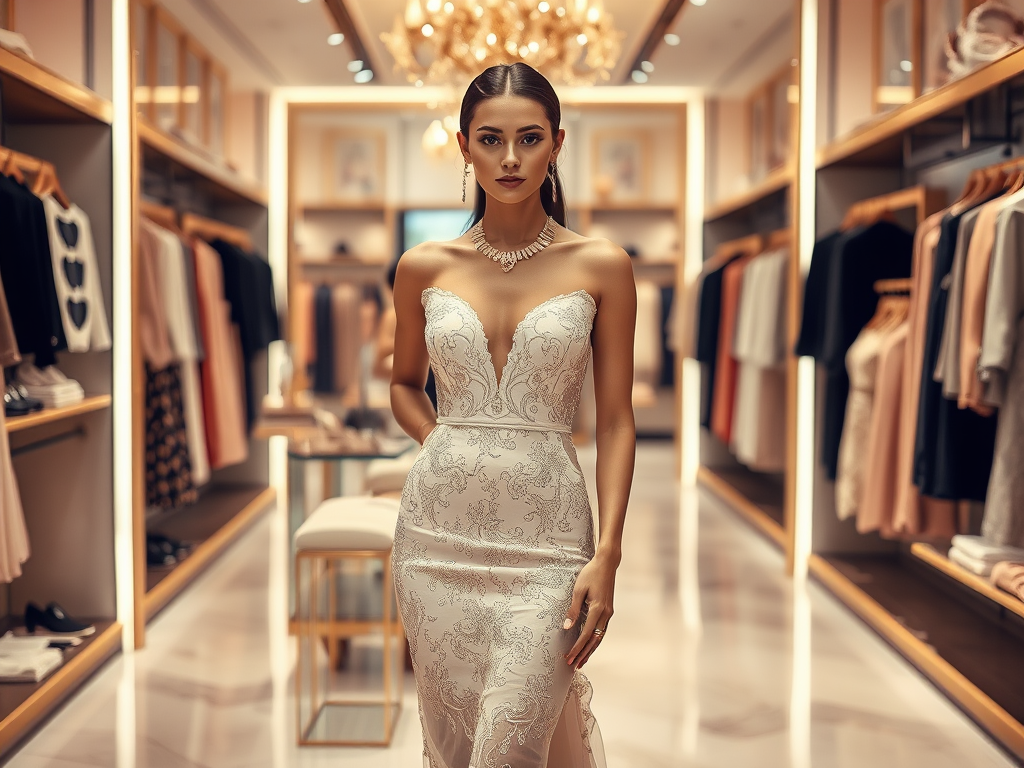Understanding the Wealth Aesthetic in Fashion
The wealth aesthetic in fashion is not merely about expensive garments or lavish accessories; it represents a complex interplay between culture, identity, and aspiration. This fashion movement speaks to the desires and dreams of individuals navigating a commodified world where appearances often define perceived value. Rooted in historical practices, today’s wealth aesthetic serves not only as a reflection of affluence but also as a vessel for social commentary and conversation. The aesthetic has evolved significantly, adapting to shifts in societal norms, technology, and consciousness around sustainability.
As we delve deeper into this fascinating world, it’s essential to recognize the various elements that contribute to the encapsulation of wealth within fashion. Luxurious materials, prestigious brands, and signature aesthetics all come into play. Additionally, the role of influential figures in shaping these trends cannot be overlooked. Future trends hint at a revolution in how wealth is expressed through fashion, representing a departure from traditional notions of exclusivity towards a more inclusive approach.
The Evolution of Wealth Aesthetic

Understanding the evolution of the wealth aesthetic requires a look back at its historical significance. Throughout history, the idea of wealth has had a profound impact on fashion, often dictating what is deemed appropriate and desirable within a given culture. Certain eras were characterized by flamboyant displays of affluence, while others leaned towards understated sophistication. Wealthy individuals used fashion as a medium to express power, influence, and class:
- Ancient Rome: Silks and intricate adornments.
- Renaissance era: Flourishing textile arts led to extravagant garments.
- Victorian period: High fashion reflected social status through fabrication.
- Modernism: The rise of ready-to-wear apparel challenged traditional luxury norms.
Historical Significance
From ancient times, luxury garments have been utilized to showcase wealth and status. In places like ancient Egypt, the rich adorned themselves with elaborate jewelry and textiles made from linen. This visual display of wealth continued through the ages, with the Renaissance bringing about opulent fabrics like velvet and brocade, often encrusted with jewels. The turn of the 20th century saw a paradigm shift with the introduction of ready-to-wear clothing, allowing luxury designs to be more widely accessible, albeit still at high prices. Each era contributed to a cumulative understanding of how wealth interplays with fashion, constantly evolving yet consistently recognizable.
Key Figures Influencing the Wealth Aesthetic
Several designers and celebrities have left an indelible mark on the perception of wealth in fashion. Iconic fashion houses such as Chanel, Gucci, and Louis Vuitton have set benchmarks in luxury, with their creativity and marketing strategies molding the modern-day landscape. Celebrities also play a pivotal role in defining trends and amplifying the allure of high fashion. As public figures and trendsetters, they can elevate an outfit from mere fabric to a status symbol.
| Designer | Influential Piece | Year Introduced |
|---|---|---|
| Coco Chanel | The Little Black Dress | 1926 |
| Gucci | Gucci Marmont Bag | 2016 |
| Christian Dior | New Look | 1947 |
Characteristics of the Wealth Aesthetic

The wealth aesthetic is often characterized by several defining traits. Luxurious fabrics like silk, cashmere, and high-quality leather create an unmistakable air of opulence. The meticulous craftsmanship associated with these materials signifies not just wealth but the exclusivity that brand power imbues. An era-defining color palette typically consists of rich, neutral tones like beige, cream, and gold, which reflects elegance and sophistication. Unique design elements such as intricate embroidery or bespoke tailoring further elevate garments and accessories, making them stand out even more.
High-end brands cultivate a powerful image through marketing strategies that not only sell products but lifestyle aspirations. The interplay between brand storytelling and luxury exclusivity creates a desire within consumers to associate themselves with these grand narratives. Luxury labels become storytellers, making their collections embody dreams and aspirations.
The Wealth Aesthetic in Contemporary Fashion
In contemporary society, the wealth aesthetic has taken new forms, influenced significantly by social media and digital platforms. Platforms like Instagram allow individuals to showcase their style and flaunt luxury items, democratizing the visibility of the wealth aesthetic. However, this visibility comes with a shift towards inclusivity and diversity, which poses challenging questions about traditional norms of elitism in fashion. Many contemporary brands are now pushing against these boundaries, creating lines that feature varying price points while maintaining a luxurious image.
- Rapid spread of trends through social media.
- Rise of inclusivity in marketing campaigns.
- Greater awareness of sustainability within luxury fashion.
Conclusion
In summary, the wealth aesthetic in fashion encapsulates a rich tapestry of historical significance, contemporary variations, and future directions. As societal values continue to evolve, so too will the way wealth is expressed and perceived in the realm of fashion. Understanding these dynamics invites appreciation for both the artistry of high fashion and the messages it conveys in a constantly shifting cultural landscape.
Frequently Asked Questions
- What is the wealth aesthetic in fashion? The wealth aesthetic in fashion refers to a style that emphasizes luxury and opulence, often characterized by high-end fabrics, designer labels, and exclusive designs.
- How has the wealth aesthetic evolved over time? The aesthetic has evolved from opulent styles of past historical periods to contemporary looks that often incorporate elements of minimalism and sustainability while still signifying luxury.
- Can the wealth aesthetic be accessible to everyone? While traditionally associated with high-end fashion, elements of the wealth aesthetic can be adopted in various ways, making it accessible through second-hand luxury items or stylish interpretations in affordable fashion.
- What are some common brands associated with the wealth aesthetic? Brands like Louis Vuitton, Gucci, Chanel, and Hermès are often synonymous with the wealth aesthetic due to their luxury offerings and global recognition.
- Is the concept of wealth in fashion changing? Yes, there is a growing trend toward inclusivity and sustainability, reshaping the way wealth is represented in fashion and making it more relatable to wider audiences.
